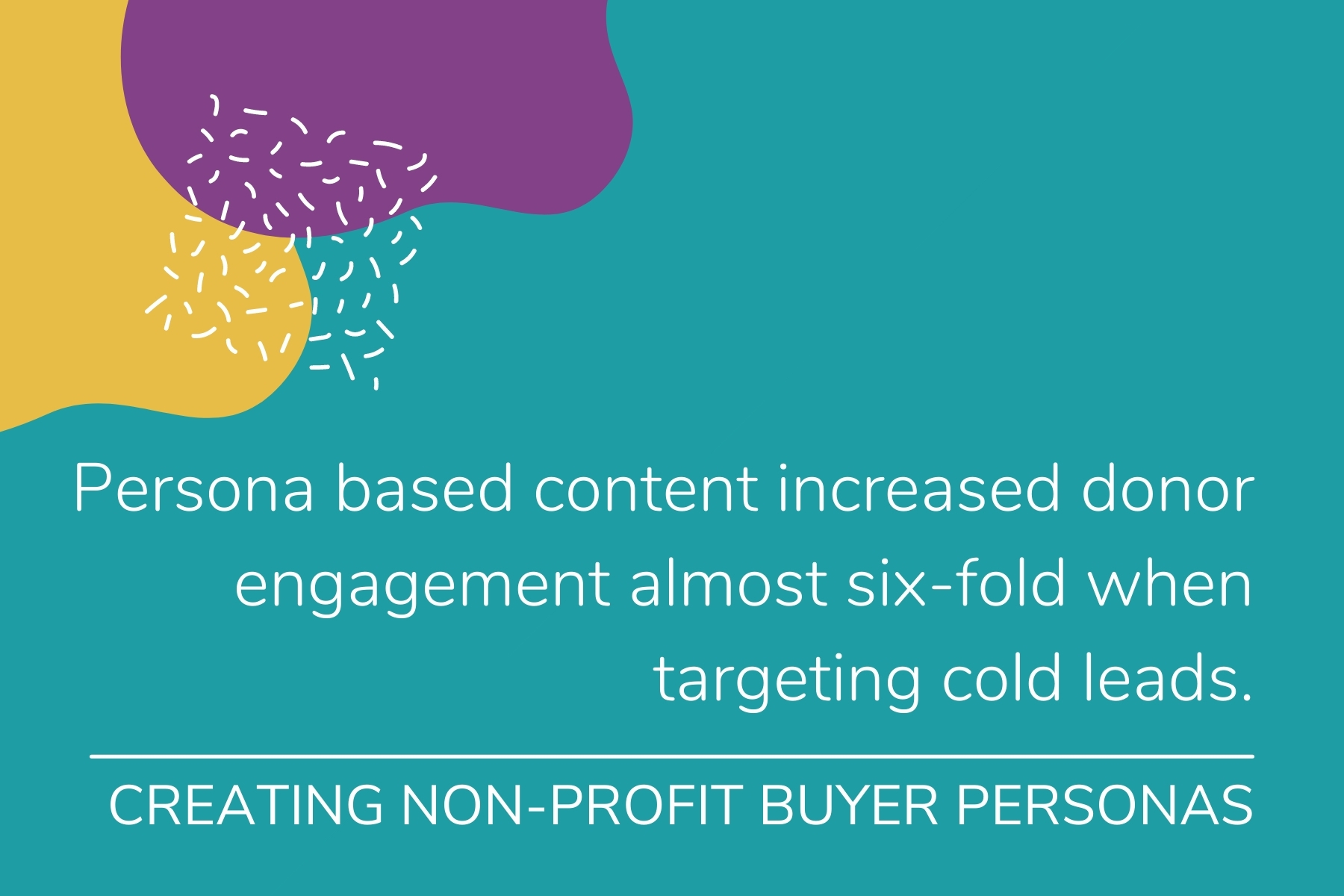Buyer personas are a great foundation for your marketing strategy; they help your non-profit to connect with its’ best audience and guide product development. Once you’ve created a portfolio of insightful buyer personas, you’ll never look back!
We’ll give a run-down of what actionable buyer personas are, why you should use them, and ideas of personas for your organisation before walking you through HubSpot’s make my persona tool - a free buyer persona guide.
What is a buyer persona?
HubSpot defines a buyer persona as ‘A semi-fictional representation of your ideal customer based on market research and real data about your existing customers’. Well-planned buyer personas should include a wealth of information – from surface-level features like demographics to the deeper details of day-to-day challenges.
Why should I use buyer personas in my marketing strategy?
Detailed buyer personas give direction to your marketing strategy; they provide structure and context which allows your marketing team to map out content with ease. Time and resources can be allocated more effectively. Also, teams across your organisation will become aligned since there is a clear vision of your model customer. As well as creating multiple personas to attract the desired audience, you should create a few negative personas – these are segments that you’re not interested in. This important step will save resources being spent on individuals who are unlikely to convert, no matter how hard you try. Remember that these prospects may not be a good fit for you and may not suit your non-profit’s cause.
"Persona based content increased customer engagement almost six-fold when targeting cold leads"
How many buyer personas should I make?
The big question that all marketers want the answer to! You need to strike a balance. Too many personas will cause your organisation to lose sight of primary strategies. Even though there is still some debate on the exact number of personas to generate, 3 – 8 is a good range to target. Whilst you pick up HubSpot’s make my persona tool, focus on creating one perfect persona. For a non-profit, this may be your ideal regular donor as they take up a large share. Remember that each persona must be unique. If there’s some overlap between personas, see if you can combine them. Or remove a specific buyer persona if you haven’t collected enough data on them. Quality is more important than quantity when it comes to personas; you want to provide value to your audience, and a clear, detailed persona will help you achieve this.
Personas specific to non-profits
When establishing personas for your non-profit, looking at your CRM database is a good place to start. Some non-profit buyer persona examples include:
- One-time donors
- Recurring donors
- Large donors
- Volunteers
- Email and blog subscribers
For example, a segment of students may best be viewed as potential volunteers. Whereas a big spender is likely to have a different profile.
How to create a buyer persona with HubSpot’s ‘Make my persona tool’
HubSpot’s make my persona tool is the way forward if you want to streamline your persona development. This handy tool is free to use and easy to navigate – it walks you through your creation step by step. Here is a breakdown of the information to include when using the tool to build in-depth buyer personas.
- 1. Name your persona:
Whilst personas are fictional, they are still representations of real-life audience segments so it’s important to humanise them from the start. Use a catchy name to make the persona easy to remember whilst relating it to their distinctive characteristics. Some examples include Donor Dom, Loyal Lucy, Volunteer Vicky, and Subscriber Sam. - 2. Demographic traits:
Before you delve into the specific details of your persona’s life, get the basics right first. Collecting demographic traits is a great foundation to construct your persona profiles. HubSpot’s make my persona tool assesses age and the highest level of education. This information will help your non-profit to position its marketing message to maximise success. By finding out your audience’s place in the community, and how they spend their time, you can plan the best fundraising events to suit their lifestyle. - 3. Their business:
Discovering the answers to the questions ‘what industry does my persona work in?’ and ‘what is the size of their organisation?’ can aid your marketing strategy. Understanding your persona’s business is useful when formatting landing page forms. By tailoring your offering to your audience, you will gain more qualified leads as you continue to provide relevant information to your prospects. Result! - 4. Their career:
We’re getting even more specific now! HubSpot’s make my persona tool will ask you to provide the job title of your ideal prospect, how their job is measured, and who they report to. This may sound over the top, but this insight is essential to make the most out of this exercise. Learning about what makes your persona determine success, as well as their general worries, will enable your non-profit to deliver content solutions catered to them. Establishing where your persona is on the career ladder will help you to suggest more feasible donation levels. For example, a full-time student may be better attracted to the idea of becoming a volunteer, whereas a CEO may have the potential to become a loyal, recurring donor. - 5. Characteristics of their job:
There aren’t many steps to go now to building your ideal donor! You should establish what your persona’s responsibilities are at work in addition to their goals and objectives. Their biggest challenges should also be considered – whether that may be communication or change management. This stage may be the most important, as it is your job as a marketer to assist your prospects in overcoming these barriers. If you can provide tools to assist them on their journey, you will gain more leads and more donors! These personal factors will allow your organisation to empathise with your audience, leading to deeper connections and more loyal clients. Don’t panic if your persona’s goals don’t completely align with your non-profit’s offer. Their goals can still inform the tone of your campaigns. - 6. How they work:
Now we’re getting technical. When completing this section of persona building, you may need to dig even deeper to find out what tools they use to do their job. Do they take advantage of a CRM software? Do they use word processing programs and email daily? Are they regular users of reporting software? Communication channels should also be noted; do they prefer to use phone, email, social media or face-to- face? This knowledge can help your non-profit to position its’ marketing message and pick out the best benefits to highlight to particular personas. - 7. Their consumption habits:
This final step decides how you communicate with your audience. Consumption data about the social networks they belong to, and where they turn to for information for their job are a couple of initial habits to track. At this stage, you should do some social listening to pinpoint what attracts your audience to these networks – why do they engage with these tools? Facebook insights are great here to understand what sort of content resonates with your ideal donors.
Make the team aware of buyer personas
As a final note, make sure that your whole team are aware of your personas. Even though buyer personas are essential in any marketing department, the wider organisation must also be on board. Brainstorm persona ideas as a group using real-life data and experiences to be a step ahead of the rest.
Want to know more about how we can help you with your marketing? Book an exploratory call with one of our consultants using the button below!
.png?width=150&height=101&name=HUBGEM%20Logo%20-%20smaller%20logo%20(1000%20x%20673).png)


.png)

%20-%20AEO.png)

%20-%20BreezeContent%20agentstudio.png)